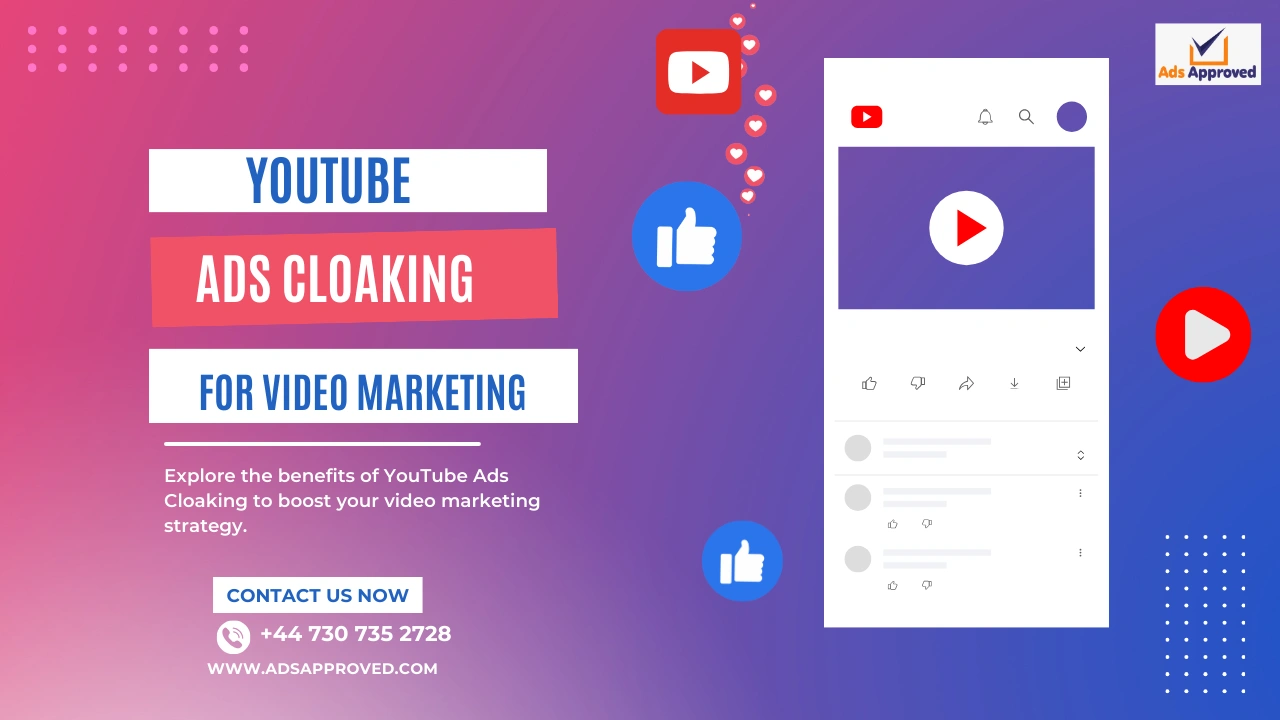In the evolving landscape of advertising, many of us face challenges. Many advertisers get their ads rejected on major platforms such as Google, Facebook, YouTube, Instagram, etc. The policies of these platforms are strong enough to catch malicious ads. Moreover, there are many other forms of affiliate marketing that do not come along with the policies of these platforms. That’s the reason many advertisers use ad cloaking to drive more traffic to their website and generate more leads. They implement cloaking as a part of their advertising campaigns. It helps advertisers gain attention in the ever-changing digital landscape and beat the regulations in the advertising world.
Cloaking can take your affiliate business to a height; however, you may need professionals for a cloaking website. They can run your offers efficiently without getting blocked. In this guide, we will explore ad cloaking and how it works. Moreover, you will get insights about the types of cloaking, techniques, and potential benefits. Without further ado, let’s dive in!
What is Ad Cloaking?
Ad cloaking is basically a practice in which advertisers show different content to the audience and search engines. However, if the person clicks on the ad, it is redirected somewhere else. The ad intends to show search engines something else and humans another thing. The major reason for doing that is to hide the affiliate link from the platforms. By doing this, the ads or services are still visible to humans but not to search engines. There are many types of cloaking that advertisers include link cloaking and SEO cloaking websites.
How Does Ad Cloaking Work?

Cloaking of ads hides the actual intent of a particular creative, URLs, and ad campaigns. They reveal the catchy content to the users, while redirecting them to another page which they want traffic for. There are many types of cloaking for ads that advertisers use to increase traffic. However, the determination to lead the ad to potential end users or not depends upon the proficiency of the advertiser. The non-users are usually bots of platforms such as Facebook. These bots work on algorithms to detect if the ad goes with the policy of the platform. To avoid them, professionals use some detection tools and mechanisms to cheat search engines.
URL ad cloaking
Talking about URL ad cloaking, cloaking experts check the quality repeatedly by hiding their original URL. They hide it in the script, showing the search engine an authentic URL. The URL looks authentic with its structure and length; however, it leads to the real website. Major cloaking procedures include:
Pre-click Ad Cloaking
Ads on a website include ad calls, which have different considerations, including device and IP addresses, etc. Now, advertisers will use these factors to decide the design and landing page for ads. Ad creativity is usually a genuine process. However, with some considerations, they alter the ad with code. They redirect traffic to the pages they want them to see. In short, in pre-click ad cloaking, the ad creative has false information. They target different users and land at a different affiliate website.
Post-Click Page Cloaking
Post-click page cloaking leads to more authenticity than pre-click cloaking. It drives more results without getting caught by search engines. In this type of cloaking, everyone sees the same ad creative. They are redirected to other pages only after they click on the ad. In this way of cloaking, users will land on different pages after clicking the ad. It’s difficult for the platforms and search engines to catch the cloaking because the creative is genuine. This type of cloaking is undetectable because the checkers may have to use a specific procedure or click on the ad themselves to see where it lands.
Find out what is TikTok Ads Cloaking and how to approve TikTok ads through cloaking method in this informative guide.
Advertiser’s Strategy to Pass Ad Scanning

Advertisers use tags with an authentic creative and landing page and hide the original URL inside the code. So, when people see that ad, it seems legit. Moreover, the ad scanner checks the tag of the ads to approve their authenticity. The reason for doing so is to approve the ads that do not comply with the policies of the advertisement platform. For example, if you want to show your affiliate offer that violates the policy of a particular platform. Then, the advertisers will use ad cloaking to post the ad. They will show an ad such as a supplement to reduce hair fall. And then, by using cloaking, they will show that the ad is legit.
On the other hand, search engines will review and pass the ad. Users who click on the ad will be redirected to the actual page you want them to show. Cloaking will help you to gain more traffic and run your advertising campaigns effectively. Hiring an expert for ad cloaking is the best practice because it needs coding skills, SEO, and advertisement experience.
Fundamental Steps for Ad Cloaking
If you are not proficient in ad cloaking, you may end up losing your account. That’s why you need professionals with years of experience for safe play with search engines. However, if you are going to do cloaking, then consider the following points:
- It’s better for you to have a different account rather than an official account. Cloaking is risky and you end up losing your account. Moreover, if your account is new, perform different activities with it. This will help you with creating a positive history before going for cloaking.
- Conduct proper research for target audience and keywords. You must know your audience because advertisements cost money. You will only waste your time and money by showing ads to the audience who have no interest in them.
- Ad cloaking requires two different pages, one to show bots of platforms and the other for a real audience. For it, you can use different procedures to redirect clicks.
- You can also use cloaking tools for ads and easily post them. With these ads, you can easily perform cloaking. However, you can’t fully trust them, as bots can capture bots easily. It’s best to hire a professional for this task.
Looking for approval of Google Ads? Approve Google Ads through Google Ads Cloaking technique.
What You Can Expect from Our Firm?

We have diverse clientage around the globe including cryptocurrency, healthcare, affiliate, Counterfeit brands, and many others. To run their advertisement campaigns, we have a strong AI based software which keeps us updated on new bots and IPs. From all major social media platforms and search engines, they gather suspects including their activities. Moreover, we create URLs in the form of success and failure. Our clients give us a success URL, and we create a failure URL for them to deceive the bots and get approval. Our process includes:
- Configuration of ad cloaking as per your target traffic and platform.
- Getting approval for advertisements and scaling them.
- AI based software to track bots and reviewers.
- Diverting reviewers to success URL and traffic to original page.
- Working with a variety of advertisement platforms including google, YouTube, Facebook, TikTok and Pinterest.
- Generating positive ROI for customers and helping them grow.
- Increasing credibility of Ads account by precise measures.
Final Verdict
It’s not easy to run advertisements that contain malicious products. Digital marketing is diverse, but not everything goes according to you. For advertisements, you must follow some guidelines provided by search engines and specific platforms. You also need to perform actions according to their policies. Under these restrictions, posting something that violates advertising regulations is tricky. You must have basic knowledge of ad cloaking to attract a wider audience without getting caught. It’s best to hire a leading firm with years of experience to elevate your exposure like us.



